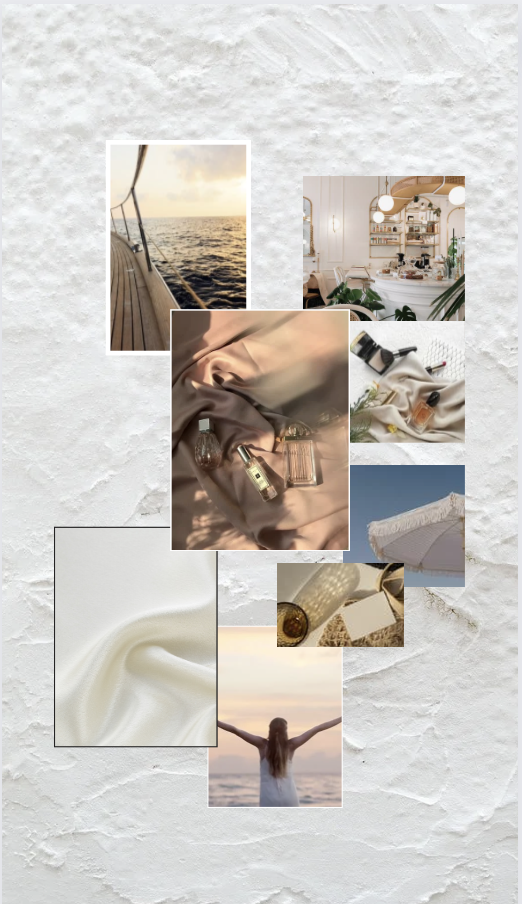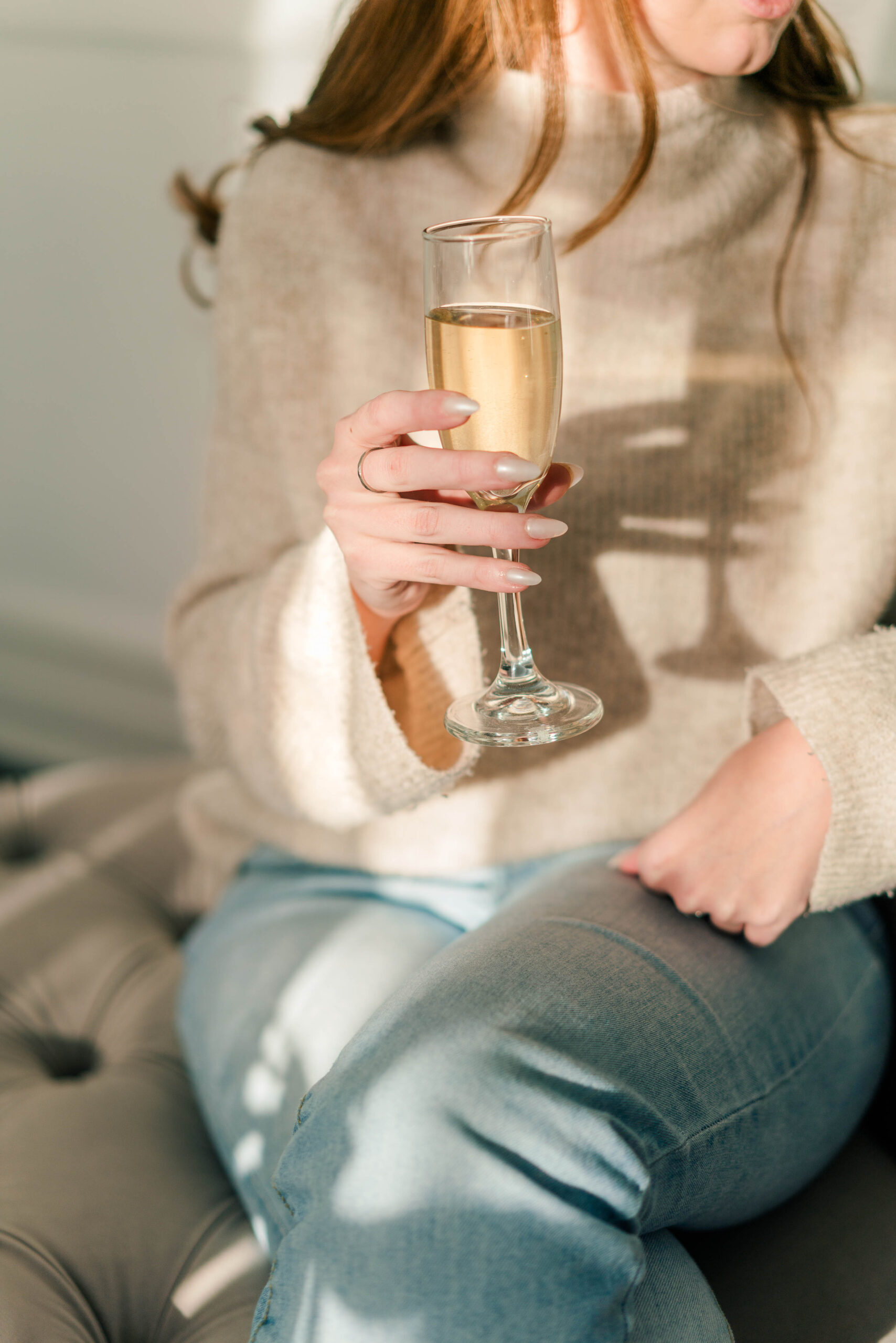
Welcome to Part 5 of the Brand Strategy Summer Series! This 8-part series dives into the processes behind my Brand Strategy sessions with clients while also giving you bite-sized, actionable tips to dive into your own brand. After following along on this 8-part series, you’ll have a totally new internal and external identity by the end of the summer.
If you missed Parts 1-4 from the Brand Strategy Summer Series, you can access those past blogs below.
Part 1: Brand Foundations
Part 2: Finding and Understanding Your Audience
Part 3: Mastering the Art of Positioning
Part 4: Crafting a Captivating Brand Voice
Part 5 of The Brand Strategy Series is all about designing an authentic brand mood board that helps create your visual identity.
Mood boards may seem like an unneeded part of the branding process, but I believe that it really helps you get set up for the aesthetic and visual identity for your brand. I deem it as essential for the brand design process and therefore prioritize this when working with clients!
First of all, what is a brand mood board?
A brand mood board is a collection of visual assets that we (meaning me, your brand designer) use as a brand direction reference for designing your visual identity. This doesn’t only consist of aesthetic photos, but it can hold samples of typography, colors, textures, or patterns.
Why does a brand mood board even matter?
Remember how in Part 4 of the brand strategy series we identified your brand voice and personality? We’re taking what we solidified through words and translating that visually. THAT is why it matters. We want to match the internal with the external.
Just like the importance of following the four other parts of your brand strategy in order, it doesn’t make sense to begin the logo design without a mood board. It’s a compass for your visual identity and helps guide your decisions through the design process. I truly couldn’t begin a design project without one.
SO, here are the steps to create a visual mood board that helps authentically shape your brand identity.
Step 1: Go back to your brand personality
Remember last week when we defined your brand personality and voice? Let’s head back to that and really try to visually communicate that a little more.
If you define your brand personality with warm and joyful attributes, you wouldn’t describe your brand as professional and stoic – those just don’t work together.
However, you may use the words cheerful, chatty, friendly, or bright. See what I mean?
Quick tip: outline 3-5 keywords you that tie in with your brand personality. These can be anything from an aesthetic or vibe, a place/city, to a personality trait. Have fun with this! You’ll be using these key words in Step 2.
Step 2: Head to Pinterest
Pinterest is truly a gold mine of inspo. When working with clients, I suggest that they actually begin TWO different Pinterest boards. The first one should be titled “How I Want my Business to Look” – inside of this board you’ll pin everything from desired fonts, colors, potential logo inspiration, textures, patterns, or anything that adds to the literal brand identity of your business.
The second board should be titled “How I Want My Business to Feel” – pin anything aesthetically pleasing that you want your business to imitate. This can be a beautiful landscape, the streets of New York City, or even perfume in beautiful packaging. Pay attention to HOW these images make you feel.

This is a fun exercise to try to bring your ideal client in on as well – what would THEY find aesthetically pleasing? Use your 3-5 key words that you created in step 1 and search on Pinterest – I find that this is most helpful when you use [keyword] aesthetic.
If you’re a light and airy wedding photographer with a luxurious clientele in a high-end city, I would suggest using keywords like old money aesthetic, luxurious wedding aesthetic, high-end florals, or dc wedding aesthetic.
Quick tip: don’t go pin-crazy and pin anything and everything to these boards. I really want to challenge you to be intentional with these boards and therefore request that you pin UP to 20 pins on each board.


Step 3: Choosing Your Photos
This can be considered an overwhelming part of the mood board process, but I simply adore it. Head BACK to your Pinterest boards and screenshot/download the images that you absolutely must be using in your mood board.
Quick tip: we won’t be using all of your pinned images in the end – that may get a little overwhelming. I suggest screenshotting maximum of 10 images on EACH of your boards, and then narrowing your images down from there. Put these downloaded images in a folder and keep them organized together.
Step 4: Putting it All Together
Now let’s have some fun! I use a variety of tools when creating mood boards, but you can generally use any tool that you’re comfortable with. I switch between using Photoshop, Illustrator, and Canva.
If you don’t have access to Adobe tools, I highly suggest using Canva since they have some amazing pre-made templates on there (and it’s FREEEEE).
While you’re putting your mood board together, it really is a matter of trial-and-error. What looks good together? What makes your soul sing? Have you found any themes within your mood board that could translate well into your brand?
For example, if you have some hand drawn icons in your mood board, you may want to include that in your branding. Or if you have a lot of bright colors in your mood board, you could take that as inspiration for your color palette.

Okay but now, how do I use my mood board?
Now that you have your final mood board, use it as a visual compass for designing your brand identity. Here are some ways I use it when working with clients:
- using it as a base for what my clients brand personality is (and expanding off of that)
- sampling 5-7 colors inside of the mood board and using that as a color palette
- looking at potential typography examples that pair well with this aesthetic
The opportunities are generally endless, but those are the main ways I like to make a brand mood board work for my clients and their businesses!
—
Overall, designing a brand mood board is a really fun part of the brand design process, and I encourage you to have so much fun with it! Step out of your comfort zone, pin things you wouldn’t normally pin (that still relate back to your ideal client audience and brand personality), and make a date of putting all of these images together in a cohesive way.





Comments +